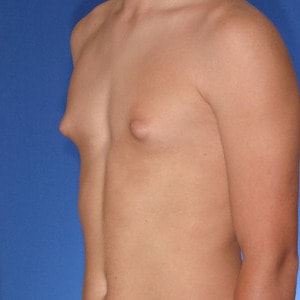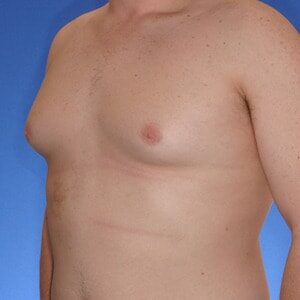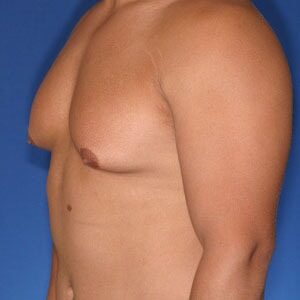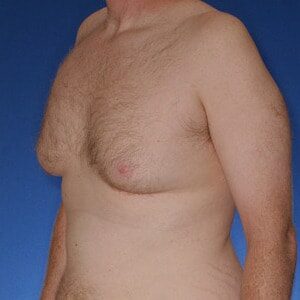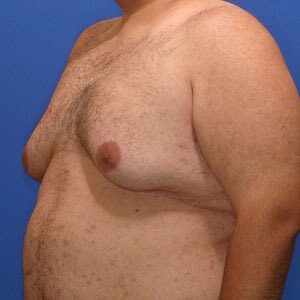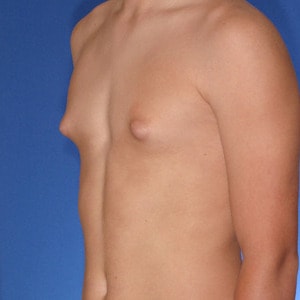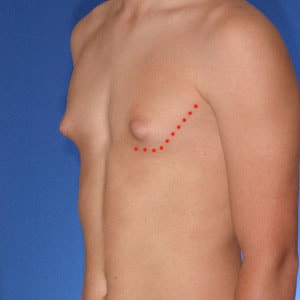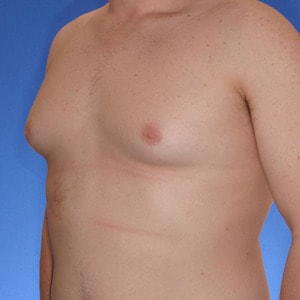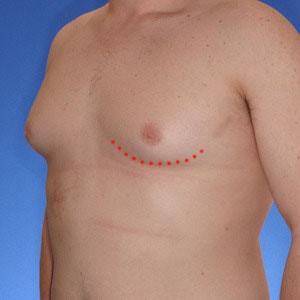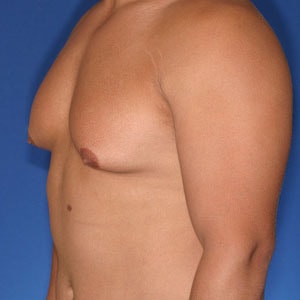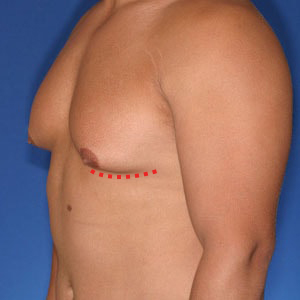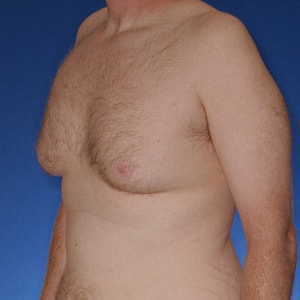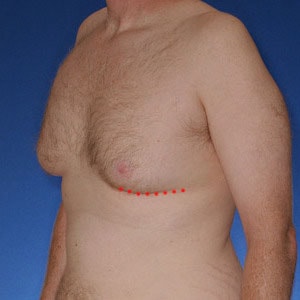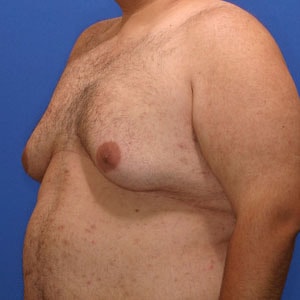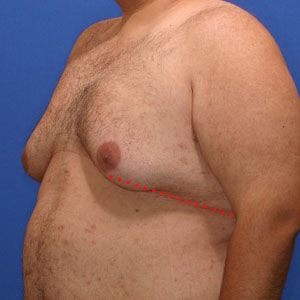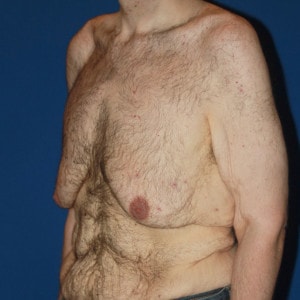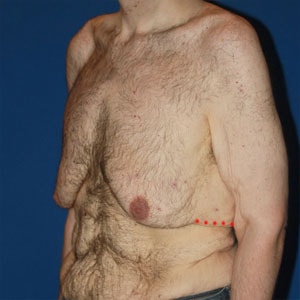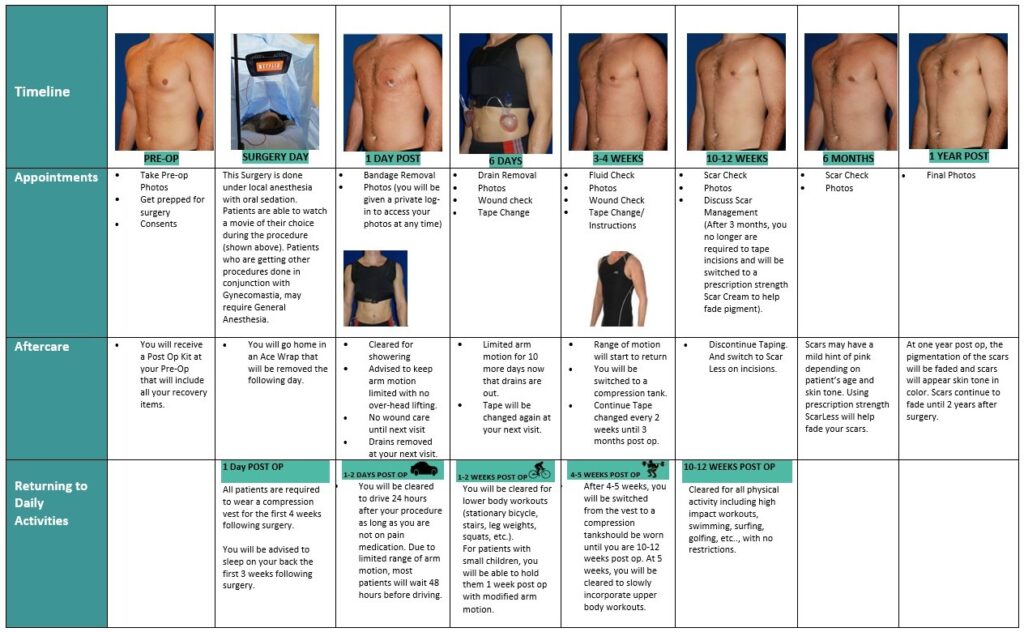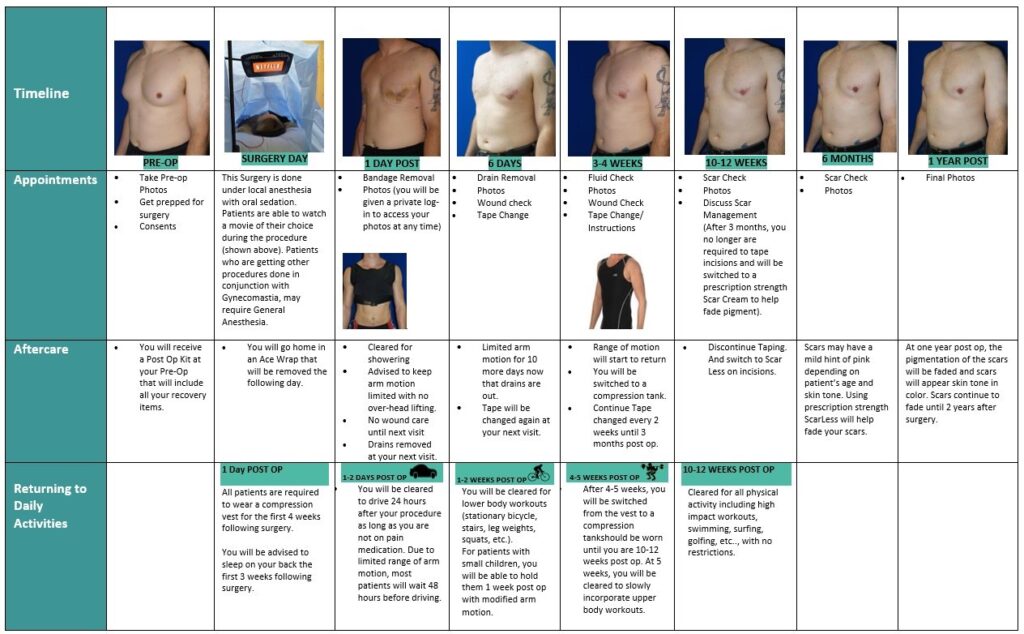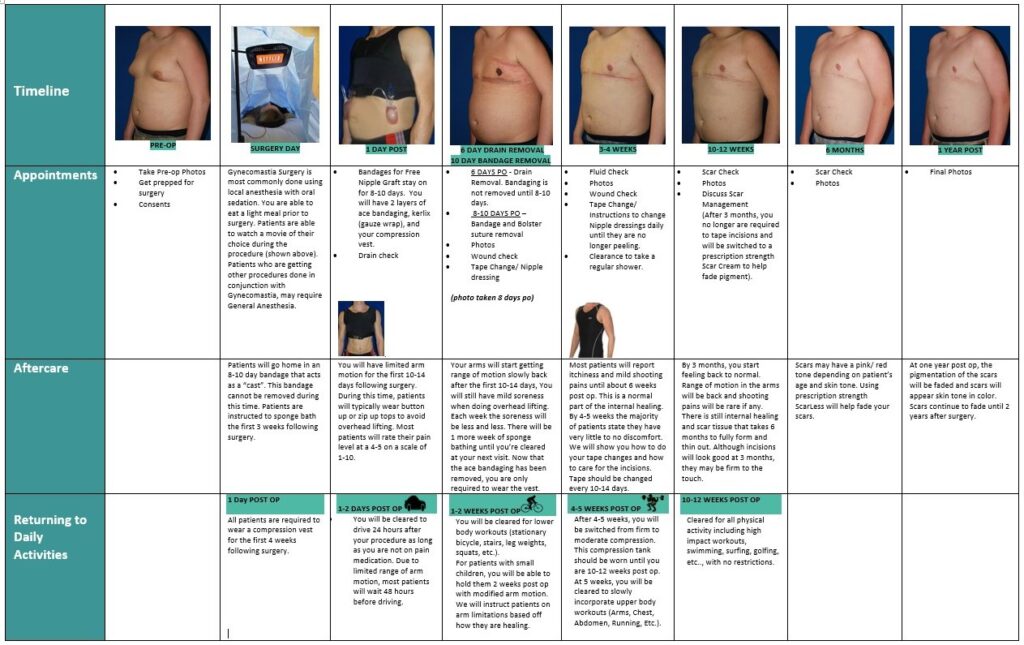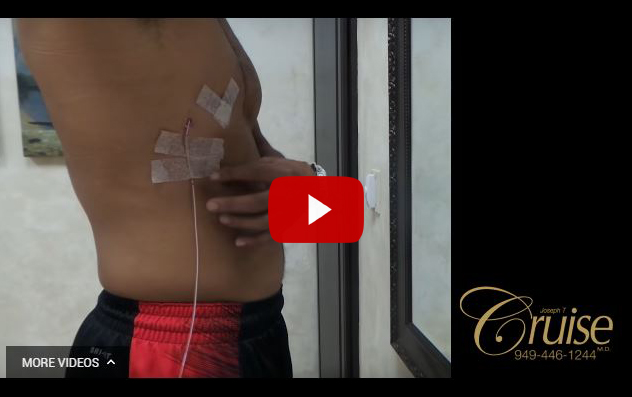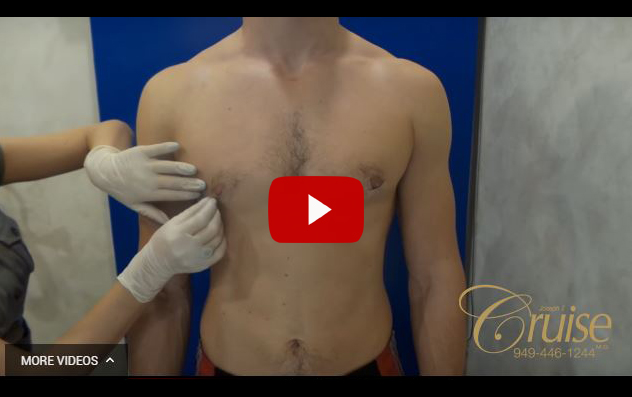Although everyone struggling with gynecomastia surgery recovery is different, Dr. Cruise has compiled a list of side effects and recovery care steps to help make the most of your downtime and overall results.
Below you will find a comprehensive list of important instructions and guidelines for post-operative care after gynecomastia surgery with board-certified plastic surgeon Dr. Cruise. You can also click on the image below to view our exclusive healing timeline created by Dr. Cruise to help gynecomastia patients better understand what to expect and know during recovery.
One of the key factors to a successful experience after gynecomastia surgery is following the instructions and guidelines provided. Our goal is for our gynecomastia patients to have the best surgical journey possible.
If you have already had surgery with another surgeon, please use the information below as a guideline only. Each surgeon has his/her own specific post-operative instructions and healing guidelines they will want you to follow.
Dr. Cruise’s Progressive Healing Timeline
Click the images below to expand for full view
Patient’s Post-Surgical Video
What to Know After Gynecomastia Surgery
- Nausea – The anesthesia Dr. Cruise uses is specifically designed to avoid nausea after gynecomastia surgery, however, some patients may still experience this. If nausea occurs, take the Zofran tablet immediately. Pain medications and antibiotics can often cause nausea as well. Be sure to take these medications with food. If your nausea persists, you may consider stopping the pain medication. Take 2 Celebrex to help with pain/discomfort.
- Activity – Immediately following gynecomastia surgery you will want to rest. Once you feel up to it get something light to eat and take medications as instructed. during the day and evening you will want to get up and walk around for 15 minutes every hour to promote proper blood circulation. Avoid lifting anything heavier than 5 pounds, lifting children, or having sex for 2 weeks.
- Hydration – Keep Gatorade availableto ensure proper hydration. Make sure you drink a lot of fluids during your recovery period.
- Sleep – After gynecomastia surgery, it is important to rest and sleep at a 45-degree angle on your back for at least the first 3 days. Continue to do so until you feel comfortable sleeping the way you normally do. This will vary from patient to patient. Important – Anesthesia may make it very difficult to get to sleep the night after surgery. In order to maintain your normal sleep schedule, we recommend taking a Xanax 1 hour before you plan to sleep. This will help tremendously. Do not take the Xanax at the same time as your pain medication. Take them at least 1 hour apart.
- Garment/bandage – For the first 24 hours after gynecomastia surgery you will have bandages and a binder wrapped around your chest. Adjust your garment/bandage every 2 hours or as needed to obtain consistent, gentle compression. This may mean undoing and repositioning the elastic bandage. If you cannot put your finger in between the garment and your body, it means it is too tight. If the garment is too tight it will prevent proper blood flow. When you reposition your elastic bandage, make sure to have an ABD pad on the chest as a buffer in between the bandage and your chestskin.
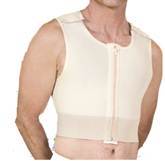 This will prevent the bandage from cutting into your skin. You may also need these pads to absorb any oozing from the incisions. Dr. Cruise will remove the bandages at your first post-operative visit. He will advise whether or not to continue using gauze or pads on the incisions.
This will prevent the bandage from cutting into your skin. You may also need these pads to absorb any oozing from the incisions. Dr. Cruise will remove the bandages at your first post-operative visit. He will advise whether or not to continue using gauze or pads on the incisions. - Post-operative garment/shirt – At day 2 or 3 the incisions should no longer ooze. At this time you may switch to placing your garment/shirt on first and then the ace bandage on top of it for additional compression to minimize swelling. No ABD pads should be necessary at this point.
- Shower – If possible, don’t shower for the first 24 hours following your gynecomastia surgery. Your chest will be bandaged and you don’t want to get them wet. If you must bathe, take a sponge bath and avoid getting water on the bandages. After your first visit, Dr. Cruise will remove some of the bandages and check your chest. Once you arrive back home it is fine to shower. Be careful as it is not uncommon to be dizzy. Simply remove the garment and take a cool shower. Allow the water to drizzle down over your chest. It is OK for the surgical tape on the incisions to get wet. Afterwards, pat dry and put your garment/bandage back on. No baths for the first 2 weeks or as long as the incisions are still open.
- Ice – You may apply ice packs or gel packs to the breast area for the first 2 days. Do not apply directly to skin. The area will be numb following gynecomastia surgery, so you may not feel the cold from the ice, which could result in frost-burning the skin.
- Incision care – The sutures Dr. Cruise uses will dissolve on their own. You will have surgical tape over the incisions to promote optimal healing. We will change the surgical tape on the incisions at about 10-14 days. When we change your tape for the first time, you will then begin doing this yourself every 5-7 days for 12 weeks.
- Driving – Do not drive for the first three days, while on pain medications, or if you feel impaired in any way.
- Blood thinners – Do not use aspirin-containing products for at least one week. You may take Tylenol or pain medication as prescribed.
- Exercise – You can exercise areas other than your chest at two weeks following gynecomastia surgery. Begin with non-impact cardio and light weights. It’s important to progress very slowly. If you feel any discomfort in your chest, your body is telling you you’re doing too much. Swelling will delay your recovery and may cause other problems. Listen to your body. Typically, it takes eight weeks to begin working out your chest and to return to impact/cardio activities (running, etc). You should also avoid carrying a backpack or messenger bag over your shoulders for the first 2 weeks after surgery. You want to avoid tension or strain on your chest, so your incisions heal properly. Many bodybuilders are interested in the use of steroids after surgery. Consult with Dr. Cruise prior to doing so.
- Work – Typically, you can go back to sedentary jobs within 3 days following gynecomastia surgery. Physical jobs could take anywhere from 1-2 weeks. Often, patients with physical jobs will modify their job or get someone to help them the first week so they can get back to work quicker. The time you need off work will also depend on how quickly your body recovers. Everyone heals at a different rate. We can typically provide a letter stating you will need a certain amount of time off from your job. The letter will not state the procedure you had or anything other than Dr. Cruise’s name. It won’t say anything about plastic surgery. You can also inquire about going on short-term disability through the State.
- Sun exposure – Avoid direct sun exposure on the incisions for at least 6 weeks. After 6 weeks, apply sunscreen (at least SPF 15) to the incision area. If possible, it’s best to avoid the sun completely for up to 3 months.
- Smoking – Do not smoke for at least 1 week after surgery.
- Medications – Be sure to take all medications as directed. If you develop a reaction to any of the medications, please stop taking it and call our office so we can prescribe an alternative.
- Bruising – If bruising occurs, you can apply Arnica Montana cream to help them fade more quickly. Avoid applying the cream directly on the incisions. Bruising usually clears up within 2-3 weeks.
Bandage Removal
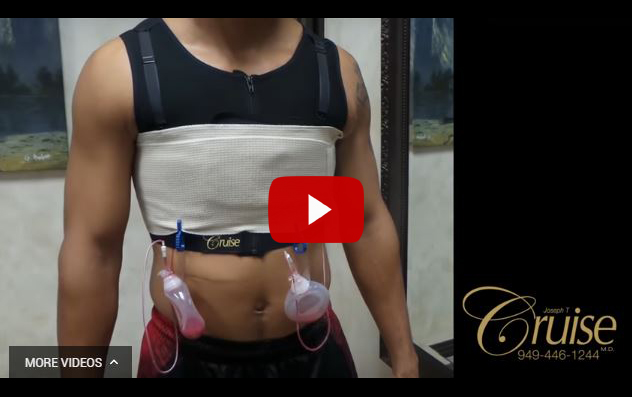
Learn how to remove your bandages 24 hours after surgery. Only if approved by our staff.
What to expect as you recover
• Lack of energy
You may experience decreased energy levels for up to 8 weeks. Try to maintain a healthy diet and drink lots of water throughout the recovery process. It’s also important to get as much sleep as you can and listen to your body. It will tell you when you are doing too much too soon.
• Swollen chest area
It is common for the pecs to be swollen and tender after gynecomastia surgery. Do not be concerned as this will subside with time. It’s important to know the body heals asymmetrically. One side of the chest might be more swollen than the other, but this is common, do not be concerned. If there is a strong difference in the swelling, please call our office. It takes approximately 3 months to achieve the final results.
• Scarring
Incisions will eventually fade to an unnoticeable color. It may take up to a year for the incisions to fully heal. Please continue to use the surgical tape provided by our office for a period of approximately 12 weeks or until Dr. Cruise advises otherwise. After that time, you might be advised to start using ScarLess® scar gel to help improve the redness. Incisions always improve over time and require patience in doing so.
• Scar tissue
After weeks or even months some patients begin to notice lumpy bumpy areas in their chest. This is scar tissue formation beneath the skin, which is a common side effect of gynecomastia.
• Emotional ups and downs
It is very common to experience emotional ups and downs following surgery. This can happen immediately after or days and even weeks post-operatively. Remind yourself this is normal and will pass. Reach out to those who will listen and be supportive. Remember you are not alone. If you don’t have family or friends who you feel will help you through the emotional lows, reach out to support groups on CSF, Real Self, or Gynecomastia.org.

• Itching
During the healing process, your surgical site may itch. This is normal and can be a sign of progression through your recovery. Avoid scratching or itching the area, so you don’t cause further irritation. You can use hydrocortisone cream around the area to help minimize the discomfort.
• Nipple sensitivity
Your nipples may become hypersensitive or lose sensation for the first 3 months. In most cases, this will go away on its own with time. When the nerves start to heal, you may feel sudden sharp pains. This is a sign that your body is progressing through the healing process.
Healing progress photos
Example of gynecomastia healing progression: breast lift w/ donut incision.
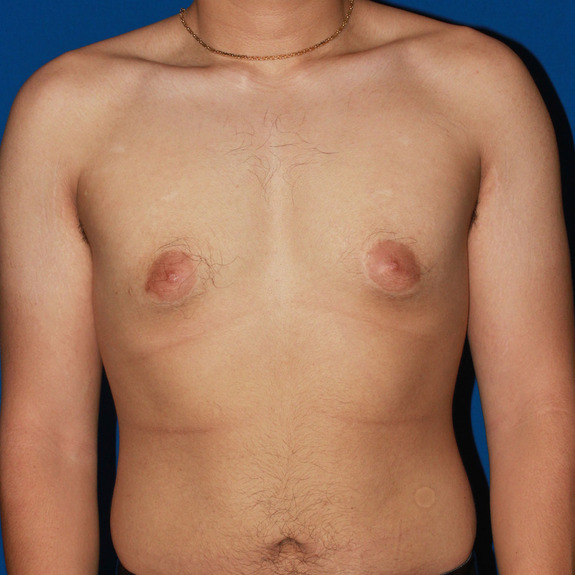
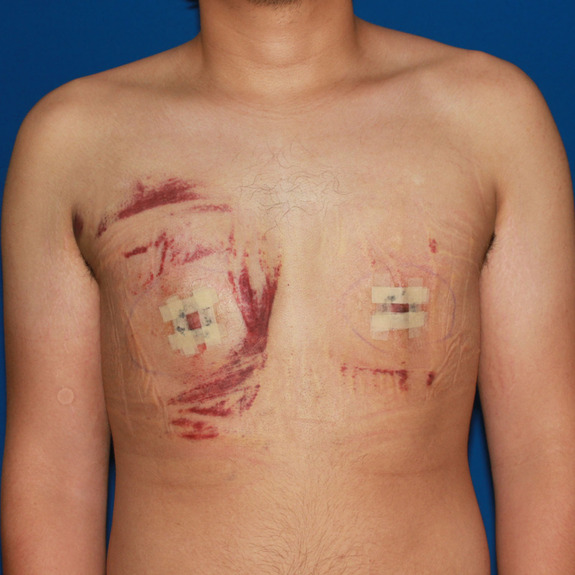
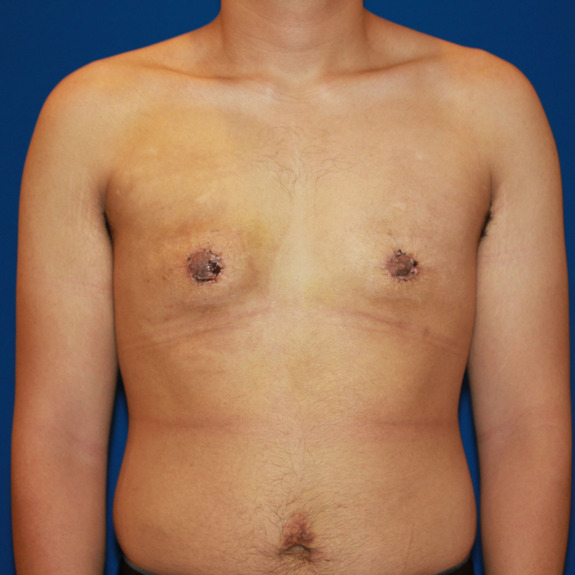
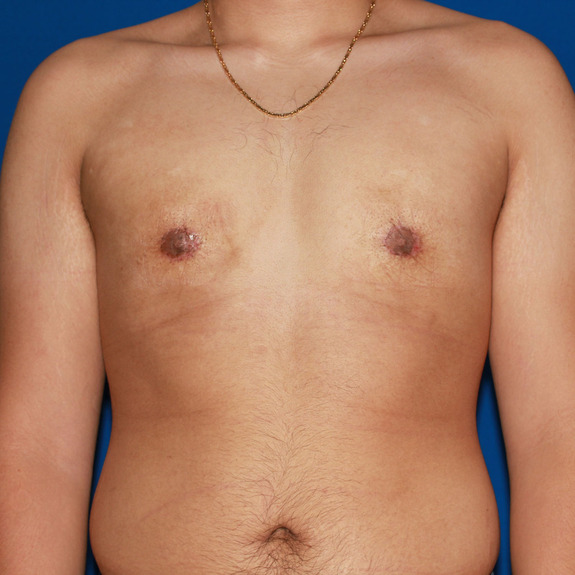

What to watch for and when to call us
Avoiding blood clots

It is important to walk at least a 5 minutes every hour while you’re awake for the first 3 days following surgery to prevent blood clots (do not overdo it). Pay specific attention to leg pain and swelling particularly if it occurs only on one side. If you notice persistent calf pain and/or swelling contact the office.
Constipation
Constipation is one of the biggest problems we encounter after surgery, yet, few people talk about it. If you have a history of constipation, we strongly encourage you to take Colace daily starting the day of surgery. If you have not had a bowel movement by day 2, begin drinking 1 glass of prune juice daily until it resolves. Otherwise, you may want to stop taking Vicodin or other narcotic pain medication and take a laxative (Ex-Lax or Correctol).
Continue with the Celebrex as this does not cause constipation. Narcotic pain medications such as Vicodin are notorious for causing constipation. Make sure you are walking and drinking plenty of fluids as this stimulates the GI tract. Eating fiber-rich food can also help regulate bowel movements.
Fever prevention
Make sure to cough and take deep breaths, as a fever is usually in the lungs for the first 3 days after surgery. Expanding the lungs with deep breaths easily corrects the fever. If you have a fever over 101 degrees call us.
Infection
Infection after removing excess breast tissue is very rare but, as with any surgery, it is possible. It would become noticeable usually between 10 days and 4 weeks after surgery. During this time pain and swelling are normally decreasing. If, however, pain and swelling are increasing we need to look into the cause.
Significant drainage that requires frequent gauze change needs to be evaluated as well. Call the office immediately. Keep in mind though, the number one cause of increasing pain and swelling after breast augmentation is overdoing it and not an infection.
Unexplained shortness of breath
Usually shortness of breath after male breast reduction is due to the tightness from the implant or post-surgical anxiety. If, however, it becomes significant where you can’t catch your breath it is recommended to give us a call.
Collection of fluid
If you notice a substantial difference in the swelling of one of the sides of your chest, give us a call.
If you need to contact us
– Please call the office during regular business hours @ 949-644-4808, after-hours call Dr. Cruise @ 949-310-8055. If either of the previous numbers fails please call our backup line @ 949-644-4808. If you feel you have a problem do not hesitate to contact us. We are here to make sure you get the absolute best care possible.
Nutrition and Healing Aids
Nutrition
While nutrition is always important for your overall health, it’s especially important prior to and following gynecomastia surgery. Increasing your protein intake, Vitamin C and Omega 3 can provide a better environment for your body to heal. There are numerous other dietary recommendations you should consider as part of your post-operative care.
Healing aids
There are various healing aids on the market that can help decrease bruising and swelling and contribute to a quicker healing process. Some of the vitamins and supplements to know about are:

- Vitamin C
- Zinc and Vitamin A
- Bromelain
- Arnica Montana cream and pills

